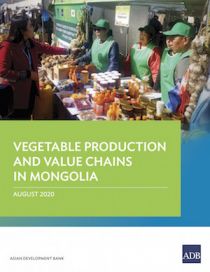Harmonization of transportation and customs policies will boost the corridor’s potential as an alternative trade route between Asia and Europe.
Introduction
Each year, the PRC—the biggest trading entity of the Central Asia Regional Economic Cooperation (CAREC) 1 framework—ships about 10 million containers of cargo over sea and more than 400,000 containers over the New Eurasia Land Bridge—a rail link that connects it with Kazakhstan, Mongolia, the Russian Federation, and Belarus. On average, trade between the PRC and Europe averages at over €1 billion daily.
The Trans-Caspian CAREC Corridor 2 network offers an alternative route to move goods between Asia and Europe. It is expected to reduce travel time for cargo shipments to 2 weeks from a month by rail, and to 2 weeks from 45 days by sea—with potential to revitalize local economies. However, lack of harmonization and coordination of transportation and customs policies along the corridor countries dampen this opportunity unless these challenges are addressed.
Linking Transport Corridors
CAREC’s transport corridors link the region’s key economic hubs to each other and connect landlocked countries to other Eurasian and global markets. The Trans-Caspian CAREC Corridor 2 is a wide-ranging multi-modal corridor that links PRC’s Lianyungang seaport in the east and the Georgian Black Sea ports in the west—passing the Caspian Sea.
Corridor 2 is a complex corridor with various road, rail, and water crossings. It also links partially with the Trans-Caspian International Transport Route, Western Europe–Western China International Transit Corridor, and Lapis Lazuli route.
From the PRC–Kazakhstan and PRC–Kyrgyz Republic borders, the sub-corridors move through the Uzbek Fergana valley, Kazakh steppe, Turkmen steppe, and end up in the Aktau, Kuryk, and Turkmenbashi ports at the Caspian Sea.
After crossing the Caspian Sea, all sub-corridors converge in Azerbaijan and continue to Georgia using either the 836-kilometer (km) Baku-Tbilisi-Kars railway or a road network. After which, cargo can go further to Europe either from Georgian or Turkish ports.
CAREC Corridor 2 countries have strong rail sectors with large rail networks—about 3,000 kilometers in Azerbaijan, over 2,000 km in Georgia, 21,000 km in Kazakhstan, over 5,000 km in Turkmenistan, and nearly 7,000 km in Uzbekistan—and most of them are expanding these networks extensively. The rail network is complemented with the countries’ over 365,000 km of roads.
Azerbaijan, Kazakhstan, and Turkmenistan, which border the Caspian Sea, as well as Uzbekistan play a big role in the corridor. They are rich in mineral fuels, and revenues from mineral fuels allowed them to invest substantially in port, road, and rail infrastructure. Among those investments are the three new Caspian ports in Azerbaijan, Kazakhstan, and Turkmenistan that opened in 2018.
Azerbaijan’s Baku International Sea Trade Port (Alat Terminal) has a capacity of 15 million tons per year of bulk cargo freight and 100,000 twenty-foot equivalent unit (TEU) containers. Construction of the port’s Phases 2 and 3 is ongoing.
The Kuryk port in Kazakhstan took in all the rail–ferry operations. The government also introduced public-private partnership models, revised the railway law, and implemented an automated system for customs data.
Meanwhile, the Turkmenbashi International Seaport increased its cargo handling capacity to about 26 million tons a year from about 18 million tons (excluding oil products). A 564-km toll road connecting Ashgabat to the Turkmenbashi seaport was also completed in 2018.
Trade and Transit Potential
While infrastructure investment around the Caspian area shows a strong dynamic in 2018–2021, the share of intra-CAREC trade (except for the PRC) in the region’s trade with the outside world remains quite modest. It averaged only 6.8% in 2003–2019. In contrast, the PRC’s share increased to 23.2% in 2019 from 7.6% in 2003.
In 2019, CAREC countries traded $87 billion within the region. The PRC alone exported $47 billion to the other CAREC countries, while they in turn exported $29 billion worth to the PRC—$19 billion of which in mineral fuels. Removing the PRC from the equation, the 10 CAREC countries traded $11 billion in 2019 among themselves, with mineral fuels accounting for $3 billion.
Given the industrial and service structures and production capacity of CAREC members (excluding the PRC), the prospects for growth look good in transit trade since the Trans-Caspian transport corridor can become a viable and competitive trade route alternative between Asia and Europe.
Recommendations
The following are recommended to achieve efficiency along the trans-Caspian transport corridor:
- Develop a clear legal supranational framework to harmonize transportation tariffs along the corridor and address the issue of supply chain disconnectedness.
- Speed up development of joint customs procedures to prevent duplication of customs operations and achieve optimal use of human and technical resources.
- Speed up development of free trade zones, which can attract important value-added enterprises that contribute to promotion of new industries.
- Refine legislations related to free trade zone and the privatization of state-owned enterprises.
- Address legal loopholes in railway laws.
- Prioritize development of single windows.
- Speed up development of inland dry ports and container terminals.
- Deploy cargo tracking technologies and enhance the integration of information and communications technology into transport operations.
- Facilitate efficient handling and standardization on break-in-gauge and wagon quantity issues, chargeback arrangements, wagon repair standards, settlement of repair charges, shunting, marshalling, and loading and unloading, among others.
- Deploy gauge change innovation at various border-crossing points to achieve efficiency.
- Increase railway capacity to handle long Chinese trains that can accommodate 42 to 44 forty-foot containers.
- Alleviate the visa bottleneck.
- Create transport–expeditor associations.
1 CAREC is composed of Afghanistan, Azerbaijan, People’s Republic of China, Georgia, Kazakhstan, Kyrgyz Republic, Mongolia, Pakistan, Tajikistan, Turkmenistan, and Uzbekistan.










